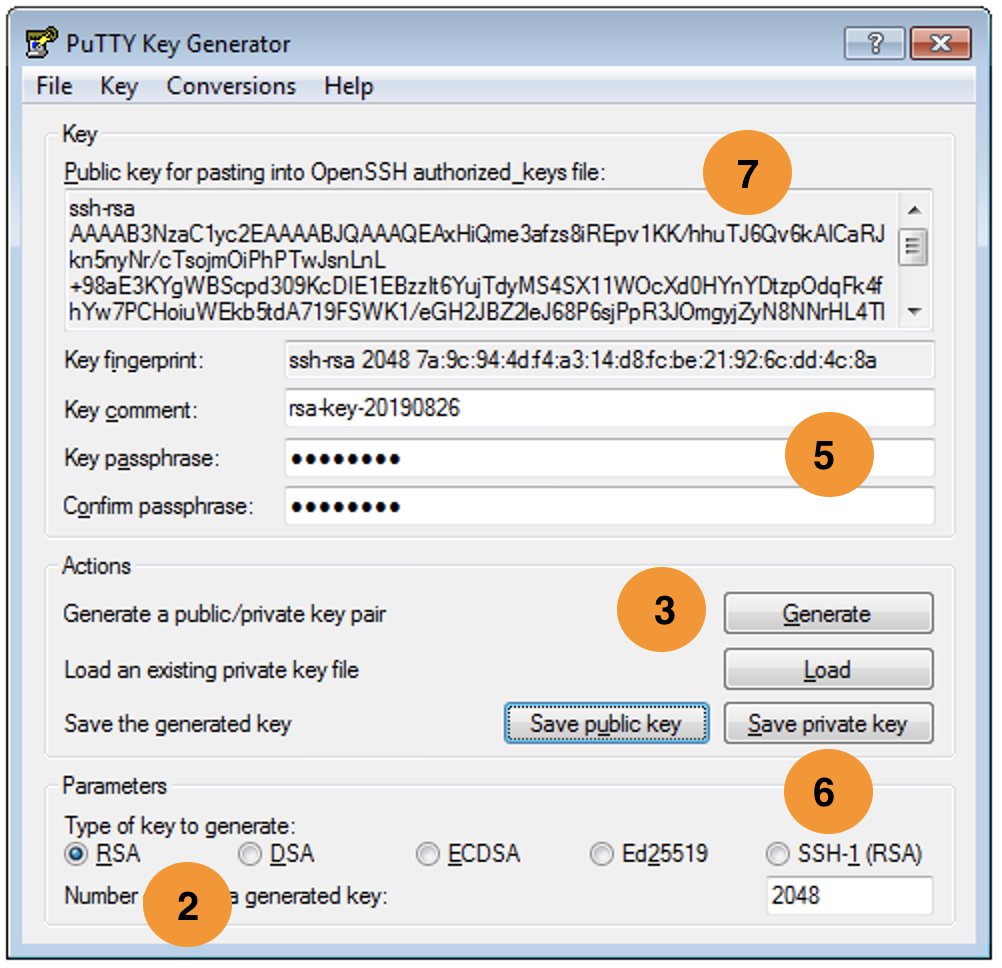

- #Ssh copy key install#
- #Ssh copy key code#
- #Ssh copy key password#
- #Ssh copy key download#
- #Ssh copy key mac#
It is the authorized_keys file in the vim text editor within PuTTY.Ĭopy the public key from the PuTTYgen window and paste it to the end of the authorized_file. Open the authorized_keys file with a text editor of your choice (the command below opens the key in vim):Ī window similar to this will pop up.Touch ~/.ssh/authorized_keys chmod 600 ~/.ssh/authorized_keys If the authorized_keys file does not exists: Because of this, the compiler throws a message that the file already exists. In the picture below, the user has already created the.

#Ssh copy key code#
ssh file has not been created type the code below. See instructions on connecting with SSH using PuTTY here.
#Ssh copy key download#
It was installed along with PuTTY so there is no need to download it.
#Ssh copy key password#
#Ssh copy key install#
If you do not want to or cannot install the shh-copy-id command use this alternative.
#Ssh copy key mac#
To install this command on your Mac follow the instructions provided here: The ssh-copy-id command may not be available on older versions of the Mac OS. To circumvent entering your passphrase every time you SSH into a machine, you can use the ssh-agent command that will enter the passphrase for you.

If all is right you will not have to enter your RIT password, but instead the passphrase for the key generated. Now the terminal will say that a key was added and ask you to try logging into the machine you just copied the public key to.Next the terminal will ask you to enter your password for the remote machine.The terminal may show you the key fingerprint and ask if you still want to install it.ssh/id_rsa.pub If the ssh-copy-id command is not available on your machine, skip the following steps and go to the "Alternative to ssh-copy-id heading". To add the key to the remote server run: ~] ssh-copy-id -i. The fingerprint of the key and it’s randomart image is also displayed. nano /home/username/.ssh/id_rsa/pub) and see the keys. You can open these files in a text editor (e.g. Now it will tell you where your key pair was saved: Your identification has been saved in /home/username/.ssh/id_rsa Your public key has been saved in /home/username/.ssh/id_rsa/pub Enter passphrase (empty for no passphrase): Enter the same passphrase again: This is to prevent others from seeing your password). ( NOTE: The terminal will not show the password while typing. Make sure to remember this password for later. Next it will prompt you to enter a passphrase and confirm it. Enter file in which to save the key ( /home/RITusername/.ssh/id_rsa):The default file is usually fine. The terminal will respond with: Generating public/private rsa key pair.In the command line run: ssh-keygen -t rsa.Open the terminal/command prompt on your computer (for Windows open terminal in MobaXterm).Mac and Linux will look slightly different but follow the same process. NOTE: These images are from using MobaXterm on Windows. Key Generation and Set up with Linux / Mac / Windows with MobaXterm Instead of entering your RIT password (which you have to change at least once a year) every time you SSH into a remote machine, you can enter the passphrase for a private SSH key (which you never have to change). The private key should be kept private (hence the name) anybody who has the private key can impersonate the person who generated it and steal their private information. Not only do SSH keys help to protect your data, they add convenience. This checking continues as information is sent to you from the server. So when you connect to the remote server, the server confirms your identity by seeing if your private key unlocks the lock. The public key is like a lock, anybody can see it but only the person with the private key can unlock it. SSH secures information with the use of a private and public key. The Secure SHell (SSH) protocol is used to securely access remote servers.


 0 kommentar(er)
0 kommentar(er)
